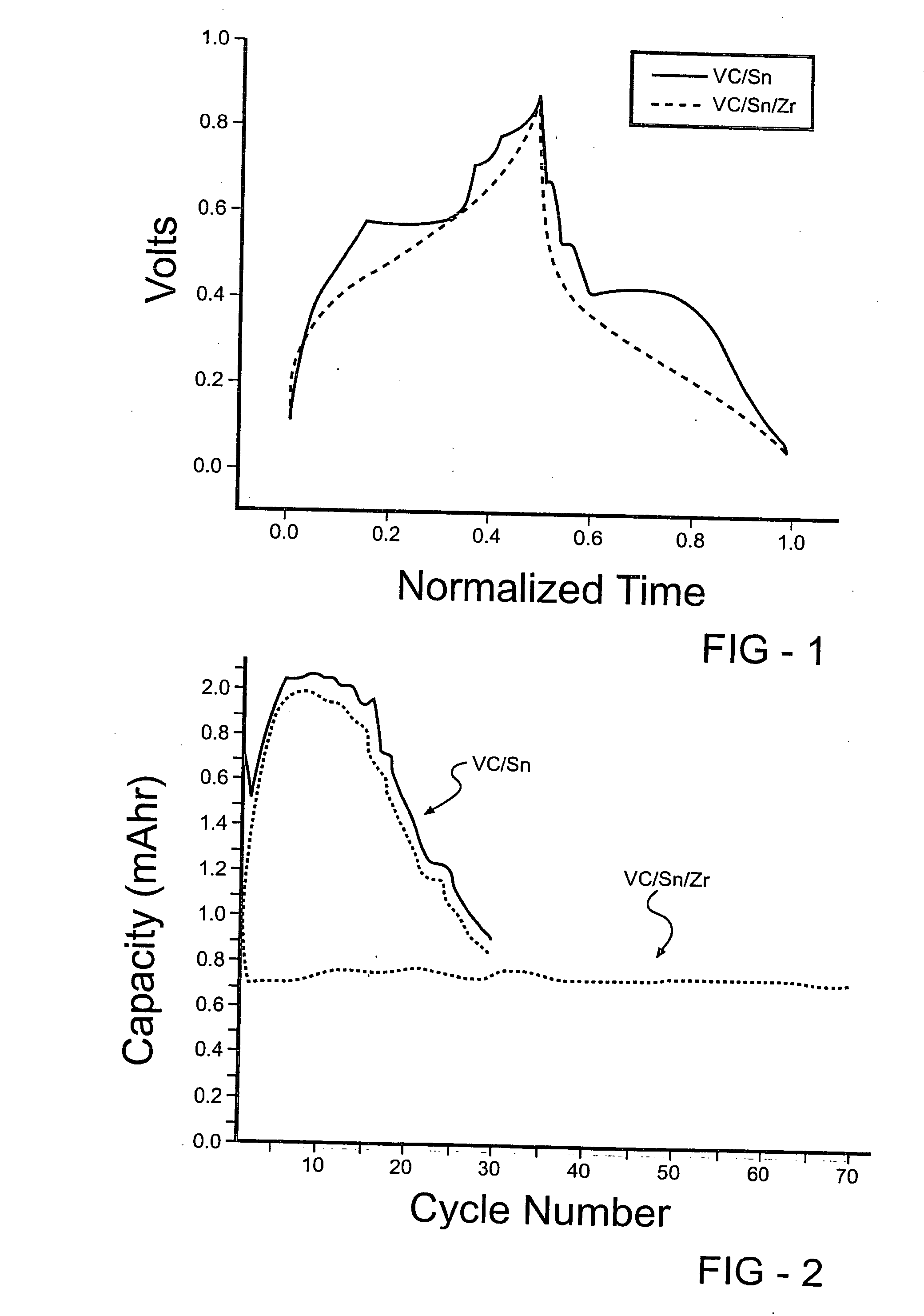Composite material having improved microstructure and method for its fabrication
a technology of composite materials and microstructures, applied in the field of composite materials, can solve the problems of reducing the cycle life of tin-based anode materials, and obtaining a proper nanodispersion, so as to raise the melting point of said metal
- Summary
- Abstract
- Description
- Claims
- Application Information
AI Technical Summary
Problems solved by technology
Method used
Image
Examples
Embodiment Construction
[0012] In accord with the present invention, there are provided methods and means whereby composite materials having nanodispersions of metals, which are normally low melting metals, may be prepared. As described above, the metals used in the practice of the present invention typically comprise group III-V metals such as tin, indium, gallium, thallium, lead, bismuth and antimony. The metals may be used singly or in combination. Tin is one particularly important metal used in the manufacture of such composites because it demonstrates superior electronic properties as a material for battery electrodes.
[0013] The matrix materials used in the present invention most preferably comprise electrically conductive materials which, in some instances, are electrochemically inert. One class of matrix materials comprises borides, nitrides, carbides, silicides and oxides of one or more metals taken either singly or in combination, and these metals are most preferably transition metals. One specif...
PUM
| Property | Measurement | Unit |
|---|---|---|
| temperature | aaaaa | aaaaa |
| melting point | aaaaa | aaaaa |
| particle size | aaaaa | aaaaa |
Abstract
Description
Claims
Application Information
 Login to View More
Login to View More - R&D
- Intellectual Property
- Life Sciences
- Materials
- Tech Scout
- Unparalleled Data Quality
- Higher Quality Content
- 60% Fewer Hallucinations
Browse by: Latest US Patents, China's latest patents, Technical Efficacy Thesaurus, Application Domain, Technology Topic, Popular Technical Reports.
© 2025 PatSnap. All rights reserved.Legal|Privacy policy|Modern Slavery Act Transparency Statement|Sitemap|About US| Contact US: help@patsnap.com

